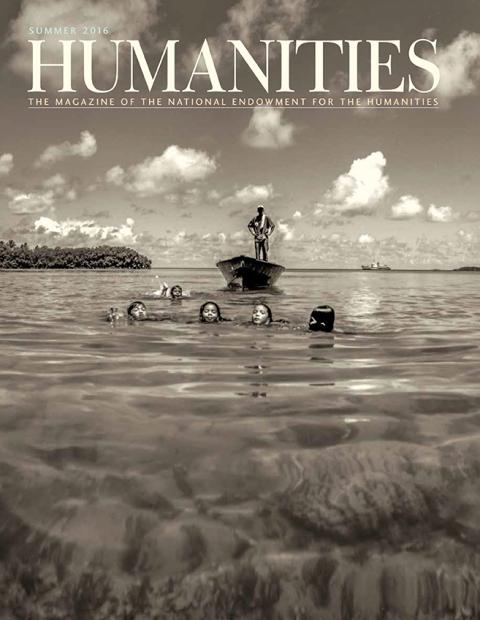At the Human/Ties conference in Charlottesville, Virginia, celebrating fifty years of the National Endowment for the Humanities, the humanities looked to be a popular success. The panel on small literary magazines was fittingly modest in size, but the audience more than filled the large conference room in which it took place. A lecture hall at the University of Virginia was filled to capacity for a discussion on the humanities and podcasting. The downtown Paramount Theater welcomed large crowds for sessions on “Making Sense of War” and a conversation with Jill Lepore and Daniel Mendelsohn of the New Yorker, as they considered the challenges facing long-form writers in this era of the great sound bite. Other events at the Paramount—a reading and talk by novelist Junot Díaz, a presentation by Hamilton actor Christopher Jackson, and a talk with Salman Rushdie—played to full houses in the 1,040-seat theater.
Yet quite frequently the discussion turned inward to that perennial puzzler about what separates humanists from a popular audience. Put bluntly: Are humanities scholars bad writers?
More than a couple of speakers defended the academic writer. Russian-American journalist Masha Gessen, who served as a judge for the National Book Award in nonfiction, mentioned that two books longlisted for this year’s prize come from academic presses: Nothing Ever Dies by Viet Thanh Nguyen (Harvard University Press) and The Slave’s Cause by Manisha Sinha (Yale University Press). How academics write is appropriate to their purposes, Gessen stated, adding that she does not think that “academics need to write like journalists.”
NEH Public Scholar Diane McWhorter, who won the Pulitzer Prize in 2002 for Carry Me Home: Birmingham, Alabama—The Climactic Battle of the Civil Rights Revolution, disagreed firmly, saying many a scholar would benefit from talking with a magazine editor. In such a conversation, she said, the scholar would talk about their research and the magazine editor would say, Well, that’s very interesting but what’s your story? Typically the scholar would answer, I just told you my story. No, the editor would reply, that’s your topic, what’s your story?
One speaker who did not buy the whole academics-don’t-know-how-to-write idea was, interestingly, a book editor: Rebecca Saletan of Riverhead Books. It certainly takes special skills and hard work to write and edit material for a popular audience, she said. And there are pitfalls to avoid. “The biggest mistake academics make in writing for a general audience is talking down to readers.”
“The point,” said Saletan, “is not to be stupid. The point is to be accessible.”
In a session devoted to little literary magazines, Hedgehog Review editor Jay Tolson seconded the complaint that academics too often “dumb down” their material. Medaya Ocher of the Los Angeles Review of Books, where PhDs are plentiful among the editorial staff, criticized the “forced jokiness” of academics desperate to take their message from the faculty lounge over to the local book club.
Allison Wright, managing editor of Virginia Quarterly Review, approached the question as a matter of definition, saying that in journalism an expert is usually someone quoted, whose valuable information is then given context inside an article written by someone else. An expert is not the same thing, she added, as a public intellectual. Chris Lehmann of The Baffler then traced the origin of that term to The Last Intellectuals by Russell Jacoby (published in 1987), adding that “we’ve lost the polemical edge that it was coined to advance.”
Another problem facing the brainy, nay scholarly, nay seriously researching or academic writer, according to Saletan, is a misplaced emphasis on storytelling as the only way to reach general readers. In reality, she said, “People like ideas” and welcome intellectually appropriate presentation. “There is only some nonfiction that can work purely as story.” Instead, academics seeking an audience larger than their tenure review board should consider essayistic, expository, polemical, or investigative writing, all of which have their place.
Asked for favorite examples of quality nonfiction she did not herself edit, Saletan mentions journalistic narratives such as Rebecca Skloot’s The Immortal Life of Henrietta Lacks and The Spirit Catches You and You Fall Down by Anne Fadiman, but also such hard-to-classify works as Ta-Nehisi Coates’s Between the World and Me, which is written in the first-person as a letter to the author’s son, and Claudia Rankine’s Citizen, a sui generis work combining poetry and prose, as just some examples of quality nonfiction that sketch the wide range of possibilities.
* This article was updated on October 6, 2016, to correctly describe two books in contention for the National Book Award: They were both on the long list for the prize. Nothing Ever Dies by Viet Thanh Nguyen later became a finalist.

